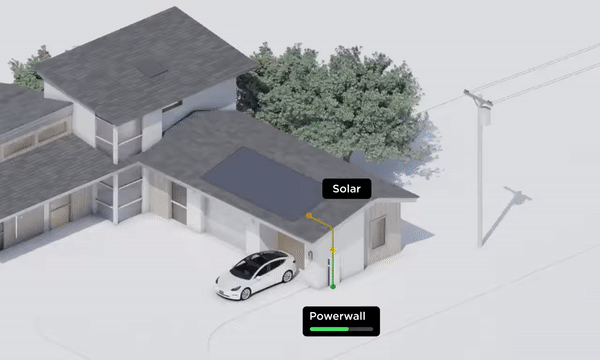How Solar Panels Work
A solar panel system is made up of three basic parts: solar panels, an inverter, and a solar gateway. Solar panels capture the sunlight hitting your roof and convert it into electricity. This electricity is then transformed into a usable form for your home by a solar inverter. The energy produced reduces your dependence on the grid, which can lead to lower electricity costs. A solar gateway gathers data from your system, allowing you to track your energy production through the RYPEC app. Discover more about the benefits of owning a solar panel system.

How does my home get power at night?
Your solar system is connected to your home’s electric panel, just like any other circuit. At night, when your solar system isn’t active, your home draws power from the grid. Your electricity meter functions as usual, recording your usage. To keep your home powered after sunset without relying on the grid, you could store surplus solar energy generated during the day in a Powerwall and use it at night, moving towards a self-sufficient household.
Where does the solar power go if I don’t use it all?
Excess power from your solar system is directed to your home’s electric panel during sunny periods. If your system produces more electricity than you immediately need, it will be reflected on your electric meter, which may stop or spin backward, depending on the type. This results in no recorded usage on your electric bill while your system feeds surplus energy back to the grid for others to use. Learn how you can receive credits for this excess solar energy.
How much do solar panels cost?
The price of solar panels varies based on factors like the installer, equipment, system size, and any necessary home modifications. RYPEC offers competitive pricing by scaling manufacturing, installation, and service. To get a personalized solar system plan and pricing, input your address and average electricity bill online. Also, explore available local incentives to see your long-term savings potential.
The RYPEC Ecosystem
The energy harvested by your solar system powers every electrical load in your home, including EV chargers. The daily energy needed for your EV depends on your driving habits. On average, for RYPEC vehicles, expect to get 3 to 4 miles per kWh of energy. Integrating all of RYPEC's energy products can lead to a self-sufficient, renewable energy home, contributing to a cleaner, more reliable grid and furthering the shift towards sustainable energy.
Reduce your property's energy costs
Save on electric bills and improve your quality of life with RYPEC Solar.